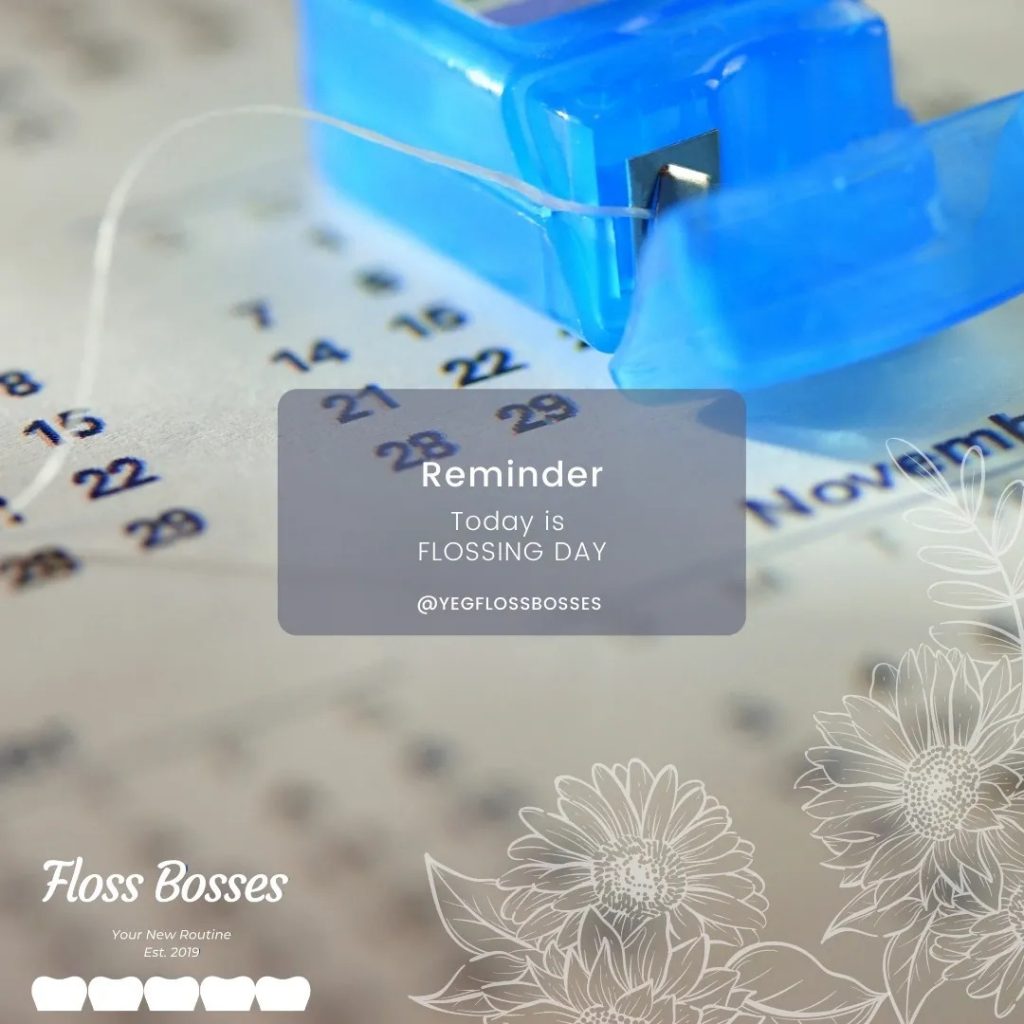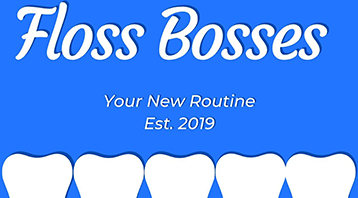November 26, 2021 is Flossing Day!
Floss or not to floss is the hardest existential question out there. NOT
But since we are the ultimate Floss Bosses, we must address the issue of flossing.
Let’s talk about floss baby, let’s talk about what it can be, let’s talk about all the things that it can kill… lets talk about flossssss (to the music of Salt-N-Pepa).
Peeps just don’t like flossing.
What are we exactly removing by brushing and flossing? Brushing and flossing remove biofilm (plaque) that accumulates on the teeth and in the gums. Studies show that biofilm also accumulate without eating. That’s probably because of the accumulation of dead cells from a typical cell turnover in the mouth.
Biofilm is film that forms on teeth. This film is a complex matrix of microbes, their byproducts (poop) and acid. Biofilm is very diverse in the types of microbes it harbours. It is so complex that is one of the toughest matters to get rid of. It leads to inflammation and formation of calculus (tartar).
Why do we need to remove this biofilm?
Because it is like a sponge. It absorbs more acid and more bacteria leading to gum disease, tooth decay and already mentioned calculus / tartar formation.
If not removed regularly, biofilm can cause inflammation of the gums within 24-48 hours and after 72 hours, with the help of minerals in saliva, biofilm starts to harden.
That’s why you need professional teeth cleaning.
What removes this biofilm?
- Simple action of our tongue, cheek and lip muscles are the primary cleaning tools of our mouth. Next time you eat, observe what you do while & after you consume your food.
- Brushing. Tooth brushing removes about 40-50% of the plaque. What happens to the remaining 50-60% of the tooth? It lingers, and it festers, causing breakdown of the soft tissue around the tooth and tooth decay.
- FLOSSING. There are number of surfaces that are not easily accessible by toothbrush. These are the areas that are more prone to bacteria making their permanent homes. Those areas are safe, moist and with less oxygen, it attracts the bad guys (the gum disease bacteria hate oxygen).
How was flossing invented? In 1815, a New Orleans dentist began advising his patients to use a thin silk thread to clean between their teeth.
Flossing minimizes the microbial burden on your overall health. You won’t drop dead from these bacteria but … 7 out of 10 Canadians have gum disease. Only 32% of peeps floss. The math maybe adding up.
How to do this so it’s done well?
- Wrap the floss around your MIDDLE FINGERS…wrap enough so when done you pinch an inch. That’s the inch you will use in between the teeth.
- The floss has to hug the tooth in a C shape way, so it can actually go beyond the gum line, deep into the pocket.
- The floss doesn’t just go in between the teeth but against each surface of the tooth.
- It is important to start on one end of lower or upper jaw and continue in a regular fashion as to not miss any areas.
- Also, make sure you go up and down at least 4x before moving on to another surface.
- Leaves floss everywhere around the house so not to forget to floss.
Now, GO FLOSS YOUR TEETH.
You don’t really have to floss all of your teeth…..
Just the ones you want to keep!

